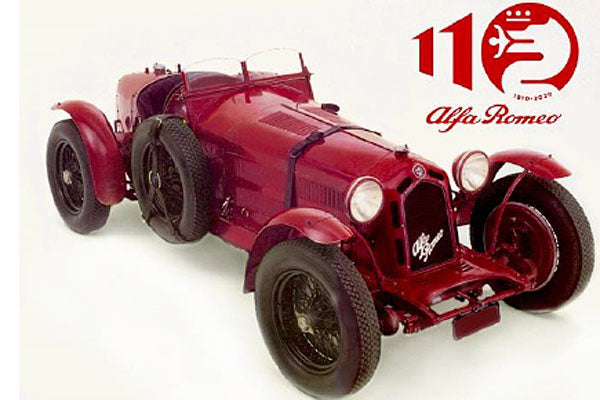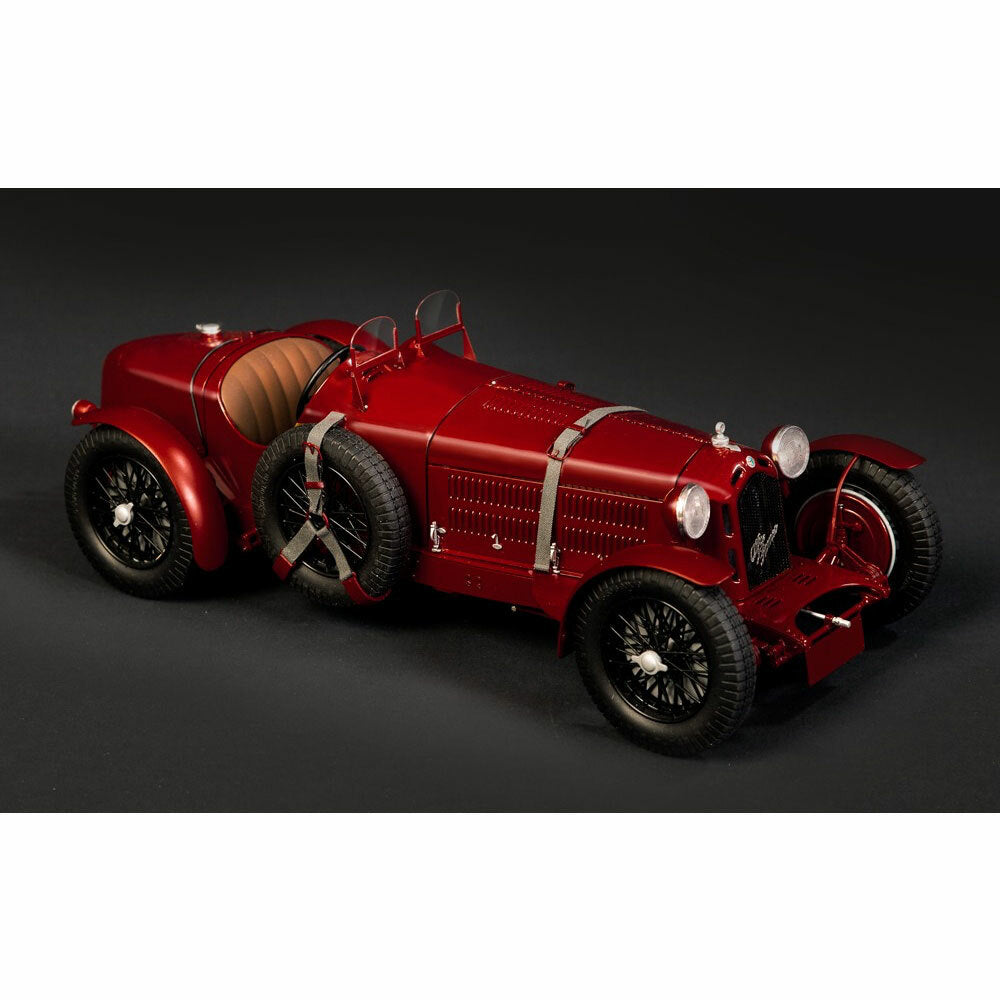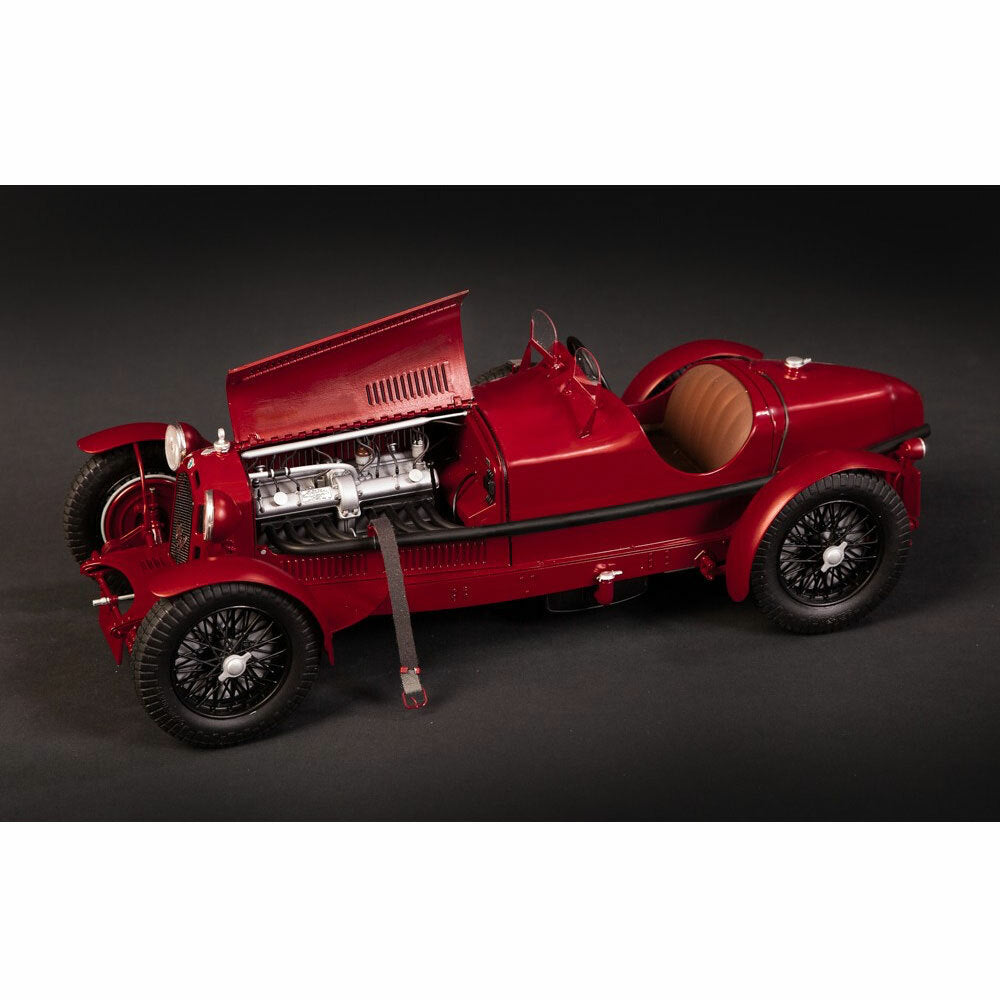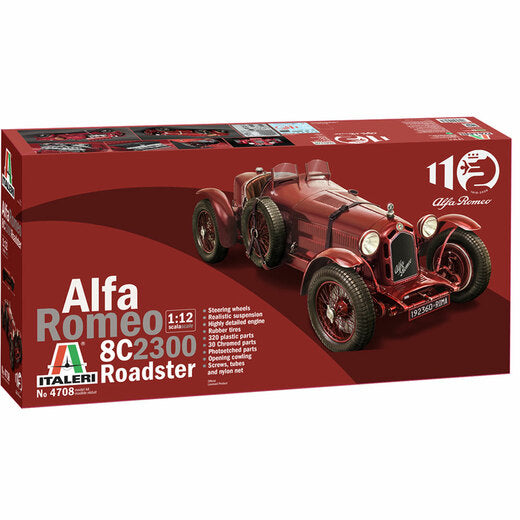Italeri 1/12 Alfa Romeo 8C/2300 (1931-1933) 100th Annivesary Edition 4708
Italeri 1/12 Alfa Romeo 8C/2300 (1931-1933) 100th Annivesary Edition 4708 will be backordered from our supplier. Delivery will take between 3-5 working days & orders will be despatched once completed.
Description
Description
The Alfa Romeo 8C can be considered as one of the most famous sports cars of the 1930s. The car's name derives from the engine adopted: an 8-cylinder in-line supercharged engine with a displacement of 2,336 cc. The Alfa Romeo could be considered the “state of art” for technology, innovative solutions and performances. Characterized by an impressive reliability and driveability the “8C” achieved significant victories in international car racing competitions. It linked its name to the famous Italian driver Tazio Nuvolari that won, among the others, the Targa Florio race in Sicily and the prestigious Italian Grand Prix at Monza. This last victory gave the “Monza” name to the twin seater GP car. From the racing version, a production batch of almost 200 vehicles was produced for the private markets and to be used on the normal road.To celebrate the 110th anniversary of the famous Italian manufacturer we are releasing the two-seater Sport version of the 1930’s. The car was distributed at that time via the Alfa Romeo sales network to those customers wealthy enough to purchase the most successful sports car of the period.
The 8C engine, first entered at the 1931 Mille Miglia road race through Italy,[2] had a common crankcase, now with two alloy four-cylinder blocks, which also incorporated the heads. The bore and stroke (and hence rods, pistons and the like), were the same as the 6C 1750 (bore: 65 mm, stroke: 88 mm 2,336 cc). There was no separate head, and no head gasket to fail, but this made valve maintenance more difficult. A central gear tower drove the overhead camshafts, superchargers and ancillaries. As far as production cars are concerned, the 8C engine powered two models, the 8C 2300 (1931–1935) and the even more rare and expensive 8C 2900 (1936–1941), bore increased to 68 mm and stroke to 100 mm (2,905 cc).
Payment & Security
Payment methods
Your payment information is processed securely. We do not store credit card details nor have access to your credit card information.









